Is My Arborvitae Dying (10 Signs to Look For)
-
Pete Ortiz
- Last updated:
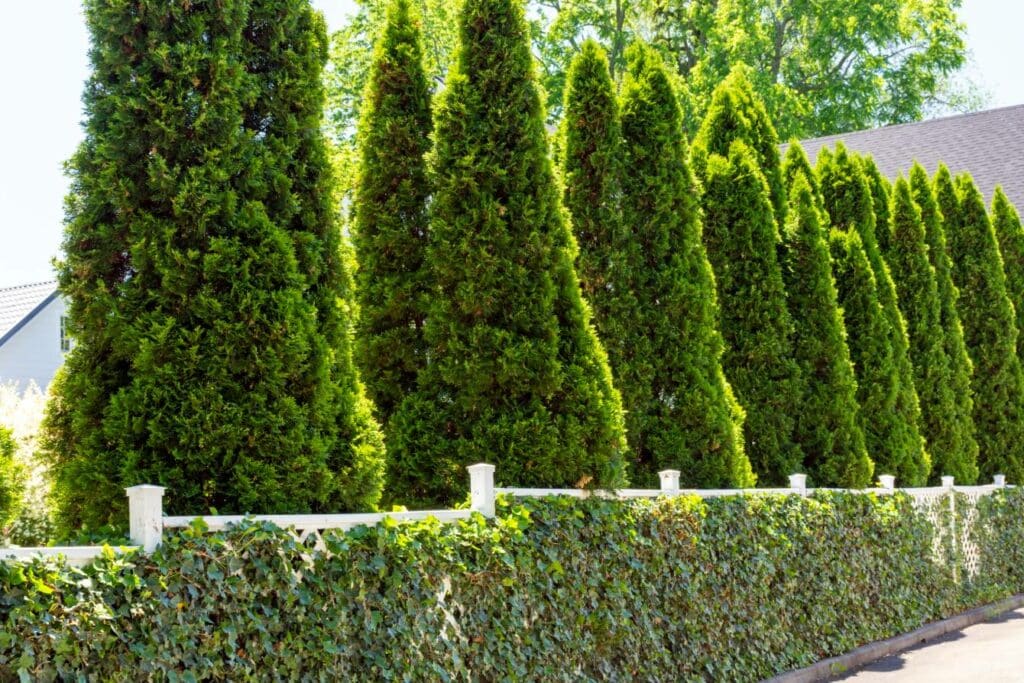
Hardy, resilient, and immune to most pests, arborvitaes are one of the greatest evergreen conifers that grow in the States. Often used by landscape designers as an element of design, these trees and shrubs are also favored by homeowners looking for low-maintenance, strong, and tall conifers. Arborvitaes are among the longest-living and sturdiest plants on the planet.
But what if the bark of a Thuja tree becomes brittle or the leaves turn brown? Does that mean it’s dying and you can’t bring it back? What are the signs of withering arborvitae? Our gardening experts made a list of the most common symptoms of a struggling Thuja and how to handle them. We’ll talk about deadwood, yellowing, splitting trunks, bark decay, and more. Stay tuned!
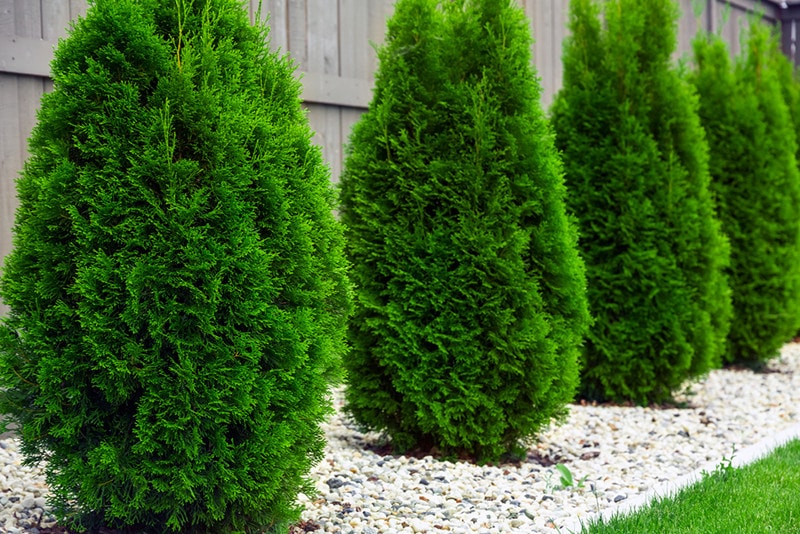
| Botanical Name | Thuja |
| Soil Type | Well-drained, moist, sandy, moderately-rich soil |
| Soil PH | 6.5–8 (slightly acidic) |
| Sun Exposure | Full sun/partial shade |
| Watering Requirements | High (once or twice a week) |
| Temperature Resistance | Can handle -20–25°F |
| Ideal Humidity | Above-average (60–70%) |
| Hardiness Zone | 3–7 USDA |
| Blooming Time | April to May |
The 10 Signs to Tell if Your Arborvitae Is Dying
1. Have Most of the Leaves Turned Brown?
The most common and easy-to-spot side effect of a dying tree is brown foliage. Now, if it’s just a couple of yellow leaf tips here and there, that’s not a cause for concern. However, when the whole tree or shrub is brown, that’s a big problem. So, what’s causing it? The short answer is temperature extremes or winter burn. Thuja trees can survive at -25 degrees F.
But, when the soil starts to freeze, the roots lose their ability to get water and nutrients. This will kill the tree quickly unless the temps go up. Drought and extreme heat are yet another widespread cause. Sadly, if most of the tree has turned brown, it’s going to die. Still, wait until spring and prune the dead leaves1 and tissue. Next, peel back the bark and check on the cambium. If it’s still there, the tree might grow back.

2. Is the Tree Bark Getting Brittle?
For a tree, the bark is like the skin. When it’s damaged, it becomes vulnerable to pests and diseases. More importantly, that makes it harder for the water and nutrients to make it to the branches. As a result, that part of the arborvitae stops producing any foliage and, eventually, dies. Critters, bugs, and splits: that’s what usually causes this. Human error is also a common factor.
For example, you could’ve damaged the bark with a lawnmower, ax, or any other tool and didn’t even notice it. Remember that the larger the affected area, the harder it will be for the tree to survive. Bark damage is a serious concern, and we recommend contacting an arborist. They’ll tell you whether the tree should be healed or cut down.
3. What About the Trunk: Is It Splitting?
Winter burn doesn’t only affect the roots but the trunk as well. If you live in an area with a harsh climate, the trunk of young arborvitae might be too weak to withstand it. Storms, extreme winds, and, again, low temperatures often make the trunk crack or even split. This won’t be a problem if you only have a cracked branch or two: be quick to remove them to let the rest of the tree heal.
Unfortunately, when the split reaches the trunk or base of the Thuja, that might kill the tree, and there’s little you can do about that. Bolting could work, but it’s a risky move. The best remedy against splits is wrapping the tree in burlap and sheltering it against strong winds, snow, and rain. Tying the branches to the trunk is another great idea. Lastly, pick crack-resistant arborvitae species.
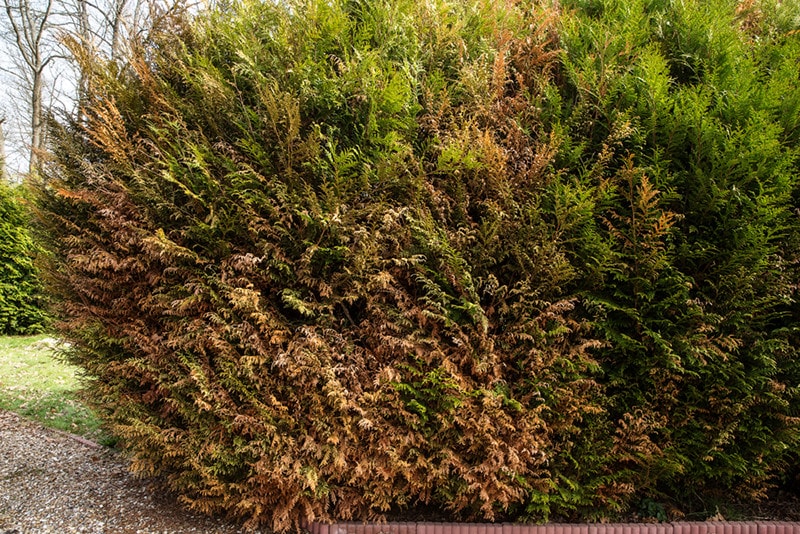
4. Are You Noticing Stalled Growth?
This one’s a bit tricky, as slow development is often caused by more than one issue. Arborvitae trees and shrubs grow best when exposed to 5–6 hours of sunlight. They do survive in partial shade as well, but that might be the reason why you’re not seeing any growth. Under-watering is another common cause. Thuja needs regular watering to thrive.
For most species, that’s going to be 1–2 times per week (or more often if it’s hot outside). Oh, it could be overwatering. Humidity matters as well. Arborvitaes prefer above-average humidity levels: 70–75%, or even higher. The first thing you should do is change your watering habits. If you’re lucky, that will be the deciding factor here.
5. Are the Leaves Starting to Drop?
For evergreens, shedding is a natural process. They get rid of the old leaves/needles in the fall to make room for new ones. Before that happens, they turn yellow/brown. So, if it’s just a small percentage of the leaves going through this, you have nothing to worry about. It’s a gradual process and will probably not catch your attention unless you specifically look for signs.
In contrast, if most of the foliage is dropping within 1–2 weeks, that means you’re dealing with drought. Just like in the previous example (stalled growth), adjusting the watering routine will, most likely, bring a stop to this. Dropping leaves might make it look like the Thuja is beyond salvation, but a little bit of water and maybe some mild fertilizer should help it recover.
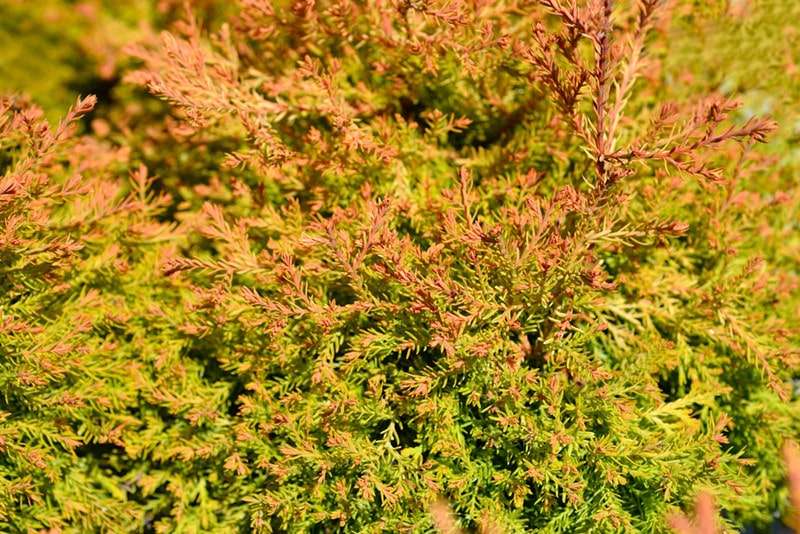
6. Is Deadwood Taking Over the Arborvitae?
But what if it’s not the leaves that are dying but the wood? We’re not talking about a couple of dead branches but an alarmingly high amount of dead wood on the arborvitae. The biggest concern here is that when most of the tree dies, it will eventually fall, causing a hazard. Just like with damaged bark, deadwood is something that only a professional will be able to (potentially) fix.
If they tell you that the tree can’t be saved, remove it. Or, if there’s still a chance to see it flourish, carefully cut out the dead wood, like you would with dead branches or leaves. The sooner you do this, the easier it will be for the Thuja to “regroup”, grow new branches, and keep on thriving.
7. The Roots: Are They Appearing on the Surface?
Arborvitaes like to go really deep into the ground. So, if they’re popping up here and there across the property, that’s probably due to physical damage. Have you been doing some construction work in the yard? That will make the tree redirect its roots in the opposite direction. Or maybe the soil doesn’t have enough nutrients for the Thuja, and that’s why the roots are going up.
This can also be caused by physical damage, but that happens rarely. To get the tree/shrub back on its feet, check the soil. Arborvitae likes its soil well-drained, moist, and organically rich. Adding a generous amount of fertilizer into the mix might solve the issue. Poorly drained soil is often the cause of surfacing roots.
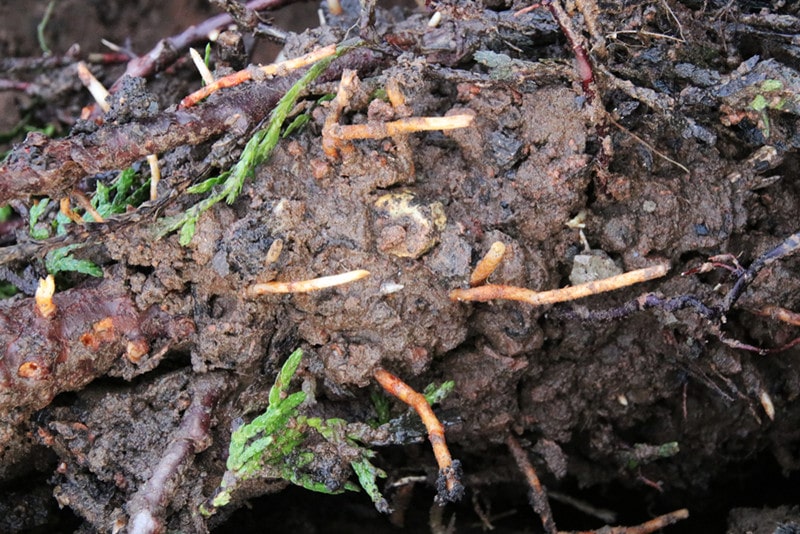
8. Is the Cambium Green or Dry?
There’s a layer between the sapwood and the bark, and it’s called cambium. It generates new bark every year, protecting the tree from diseases and pests. On top of that, the cambium is responsible for creating sapwood and phloem, growing the trunk and the branches. So, how do you know if it’s healthy or not? Don’t worry; this won’t take much effort.
Grab a pocket knife and gently cut a bit into the bark to reveal the cambium underneath it. Check the color. If it’s green, the tree is alive and well. But if it’s dry, that means the arborvitae is barely hanging on. Brown tips, dieback, dropping leaves, and slow growth can all be the result of damaged cambium. In most cases, if only 25% of the bark or cambium is damaged, the tree will be able to heal.
9. Pests and Animals: Are They Attacking the Tree?
Thuja trees and shrubs are pretty strong against pests, but they’re not immune. The most common destructive bugs that like to feed on them are the carpenter ants and bark beetles. Again, arborvitaes do a decent job of keeping bugs and insects away. So, if you’re witnessing unusual activity, that means the tree is in big trouble.
Squirrels, deer, horses, and rabbits also like to sip on cambium moisture. Brutes with strong teeth bite into the bark to reach the cambium. Others wait for an opening (like damage caused by natural elements or other animals) to feed on it. Critters can be scared away by planting pinwheels, noise making devices, and physical barriers. As for pests, treat them with an insecticide.

10. Do You See Tiny Dots Underneath the Bark?
Have you ever dealt with the thousand cankers disease? It’s a rather aggressive fungus that makes the tree rot, and the longer you let it eat away at the trunk, the harder it will be to recover the arborvitae. Bark beetles are to blame for this as well. They carry a fungus that makes it harder for the tree or shrub to deliver nutrients and water to the branches and leaves.
The most common symptoms include thinner foliage, brown tips, dead leaves, and black dots all over the tree (right underneath the bark). If you look closely, you’ll see tiny “tunnels” made by the beetles. The only working remedy here is pruning. Try to cut away all the affected parts so that the rest of the tree can recover. Do this in winter and use alcohol (70%) to disinfect the pruning scissors.
 Arborvitae Maintenance: A Quick Guide
Arborvitae Maintenance: A Quick Guide
Thuja species grow best in well-drained, moist soil. To stimulate growth, make sure the soil is moderately rich. As for acidity levels, 6.5–8 is the perfect pH level. The blooming period is in early to mid-spring, and most trees and shrubs are hardy to zones 3–7 (the lower the zone, the more cold-resistant the plants are). They are quite tough and won’t freeze over the second the temps drop below zero.
Long exposure to cold temperatures will make them wither and die, though. Arborvitae thrive when exposed to direct sunlight. It should get at least five hours of sun during the day. But partial shade (only 2–3 hours of sun) is also acceptable. Water the tree once or twice a week and double the watering sessions during the summer heat.
How Long Do Arborvitaes Live?
Like most trees, shrubs, and flowers, arborvitaes grow best in the wilderness. They usually last longer, too, because the weather conditions like temperature, humidity, and sun exposure are near-ideal. For example, certain Thuja trees can live for up to 1,000 years in a natural environment. On average, arborvitaes last for 50–150 years. But in an urban environment, the lifespan is lower (yet still decent).
If you water, feed, and prune your tree or shrub properly, it will “stick around” for at least 20–60 years. The exact lifespan varies, of course. Let’s take the Green Giant Thuja: it can live for 40–60 years. In contrast, the Emerald Green species has a shorter lifespan: 20–25 years. Keep this in mind when choosing between different arborvitaes for your property.
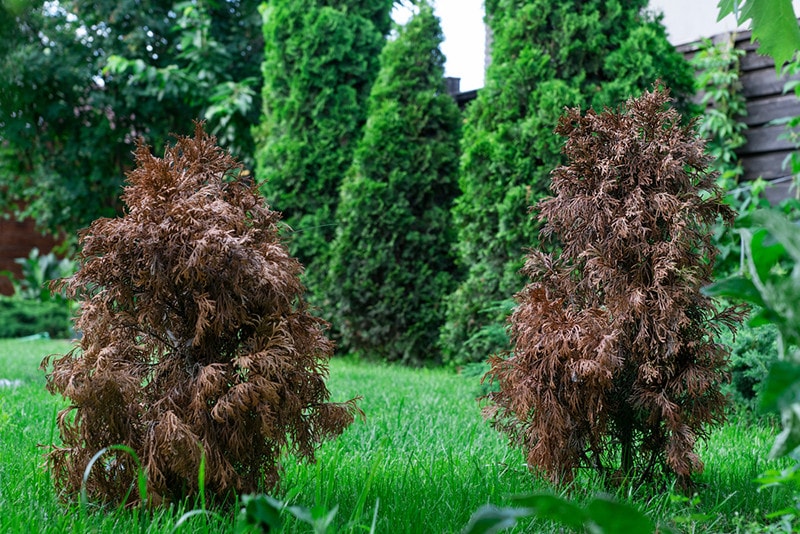
Common Uses for Arborvitae Evergreens
In Latin, arborvitae stands for “Tree of Life”. The reason: our ancestors used the oil from these trees to treat various health conditions. Many centuries later, this tree still used as medicine. It can slow down cancer and decrease inflammation. Today, Thuja trees are a go-to choice for posts and poles. But in the past, it was more often used to make a fire and put together the frame for canoe boats.
Home landscaping is another area that arborvitaes excel in. These dense trees and shrubs look stunning when planted in a “close formation” and do a great job of providing privacy. They grow up to 40 feet tall and produce scale-like foliage. The smell, beautiful foliage, and ease of maintenance make them an excellent choice for ornamentation.
Conclusion
Arborvitaes aren’t afraid of tough climatic conditions or destructive bugs. However, they’re not indestructible, and sometimes, these trees and shrubs do need your help to make it through a tough period. That’s why it’s so important to not only know about common signs of dying arborvitae but also learn how to bring it back to life.
Members of the Thuja family are tough, and once you fix the watering routine, sun exposure, or soil condition, they will heal swiftly. Essentially, all you have to do is keep your eyes on the leaves, the bark, and the trunk and interfere when things get a little bit out of hand. The sooner you help the tree/shrub, the faster it will recover!
Featured Image Credit: Joanne Dale, Shutterstock
Contents


